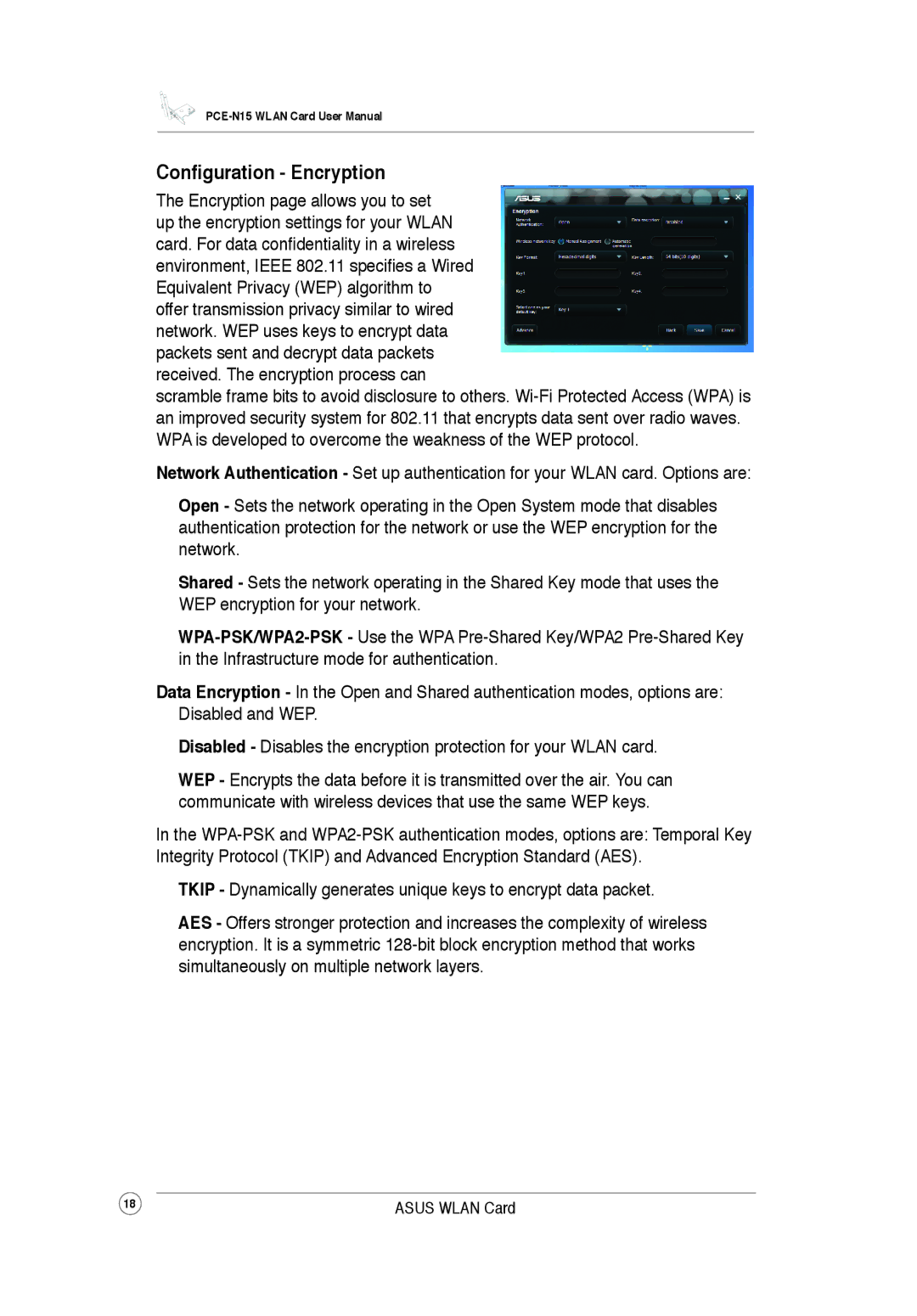
Configuration - Encryption
The Encryption page allows you to set up the encryption settings for your WLAN card. For data confidentiality in a wireless environment, IEEE 802.11 specifies a Wired Equivalent Privacy (WEP) algorithm to offer transmission privacy similar to wired network. WEP uses keys to encrypt data packets sent and decrypt data packets received. The encryption process can
scramble frame bits to avoid disclosure to others.
Network Authentication - Set up authentication for your WLAN card. Options are:
Open - Sets the network operating in the Open System mode that disables authentication protection for the network or use the WEP encryption for the network.
Shared - Sets the network operating in the Shared Key mode that uses the WEP encryption for your network.
Data Encryption - In the Open and Shared authentication modes, options are: Disabled and WEP.
Disabled - Disables the encryption protection for your WLAN card.
WEP - Encrypts the data before it is transmitted over the air. You can communicate with wireless devices that use the same WEP keys.
In the
TKIP - Dynamically generates unique keys to encrypt data packet.
AES - Offers stronger protection and increases the complexity of wireless encryption. It is a symmetric
18 | ASUS WLAN Card |
